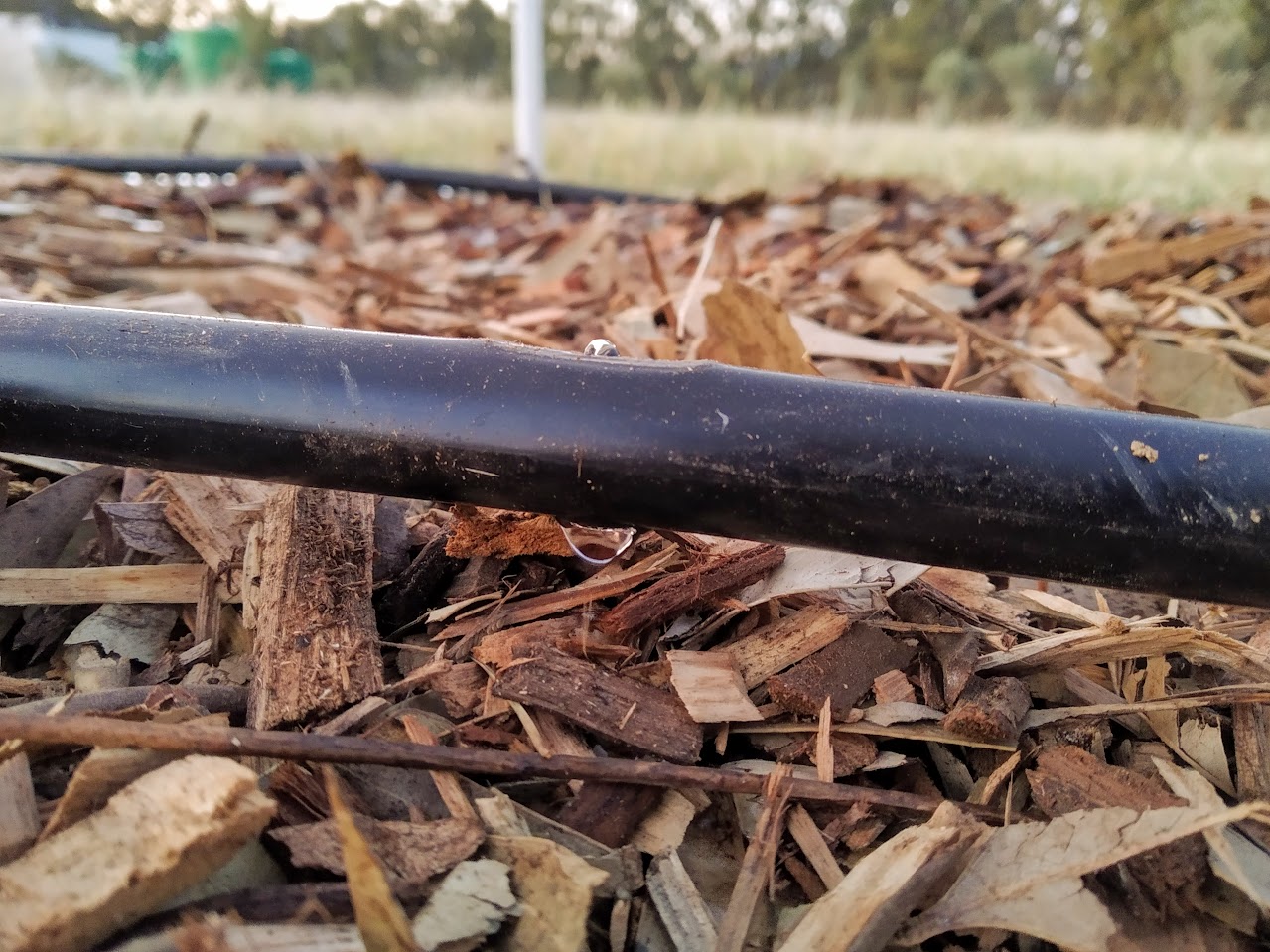It is becoming more obvious by the day, why our grandparents used to say things like “in my day…”. I look back four years, when we lived in the Karoo cottage, and how we had to deal with irrigation in that parched, rainless desert climate. Being honest, looking back at the last year or just pre-summer, it becomes almost possible to utter things like “back in my day”. Irrigation and fresh-water management on our little pieces of land was always one of my favourite things. It is an important aspect too, as its misuse not only violates permaculture principles but also affects everyone else. If you abuse water, your neighbour suffers for it; So will you. Today’s article is a free and trivial one, where I describe some changes we have made going from sprayer to dripper and how it saves thousands of litres of water a month.
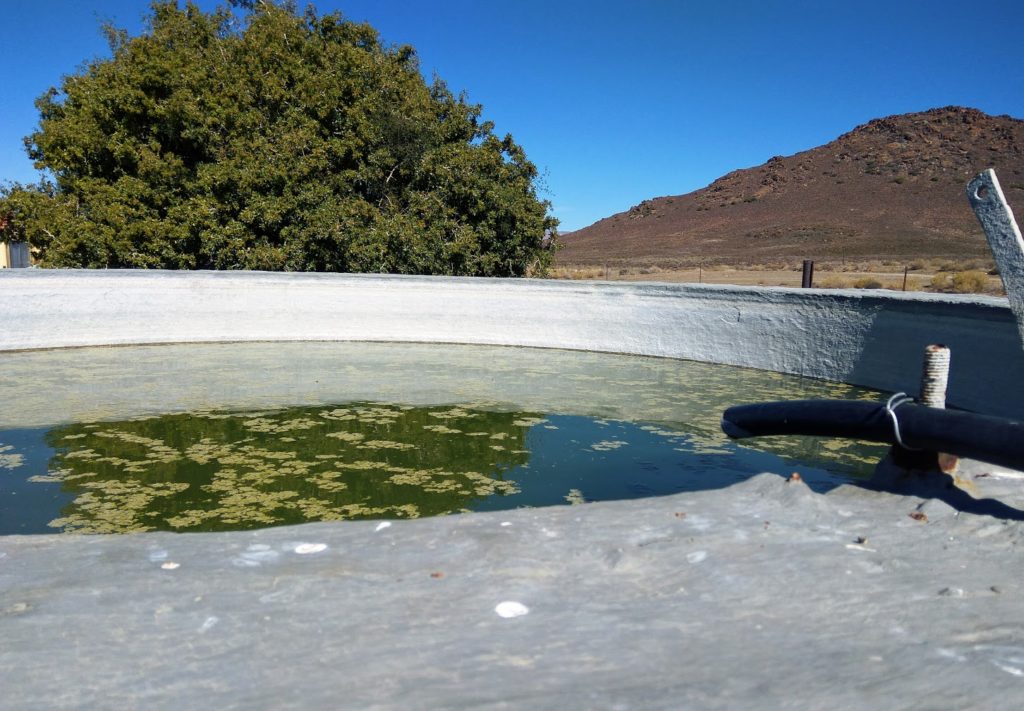
In the Karoo, we got to live in Steve’s cottage on the opposite end of a very large farm (tens of thousands of hectares). The Karoo receives anything from a few millimetres to perhaps 300 a year where we stayed. Although several boreholes exist on that farm, only a few had clean drinkable water, and the irrigation friendly ones were kilometres apart. It’s fairly common to see 40mm pipes running from one place to another on that farm. The water arriving at the cottage was clean and sweet. It would be misuse to do a large scale growing operation with it, so we had to use it sparingly. A few hundred litres to water everything there was difficult. Using buckets and a hosepipe, it took around an hour to carry water to the fig trees and rehabilitation areas.
As life would have it, we then got our tiny 1-acre farm-zoned land, with nothing on it but a borehole. As time went by, careful building and development of the yard continued and water needs increased. There was the long-term goal of growing enough food, the looming threat of wildfires, our domestic needs and also drinking-water for the animals. Everything needs water. If you’re not careful, if you don’t keep things simple then demand, overuse and repairs will overwhelm you. Take this advice strongly, think small, design small, stay small. Complexity yields complications. Going from sprayer to dripper is in some sense, simplification.
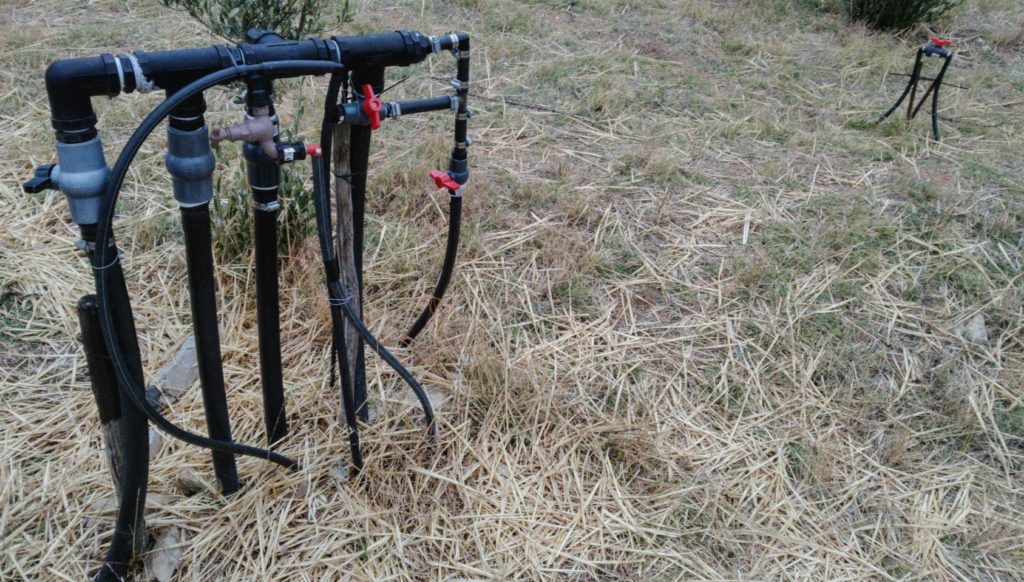
We designed our water system to have a ‘backbone’, be leak-free and have stop valves at every logical point. Flattish land, means we needed to get two things to have pressure. An electrical booster pump on the house to supply usable pressure to the geyser and taps, and an elevated tower to keep a single 1000-litre tank on. The tank on the tower provides less than half a bar of pressure, but this is ample for micro-sprinklers, garden drippers, and animal waterers. The main 40mm pipes provide high flow to main areas, and from this we just T-connect off to subsystems, and it works for the low pressure stuff.
Over time, we needed some overhead form of irrigation, and for this we had to call on the current booster pumps. Driving impact sprinklers is an impossible feat with 0.4 bars of pressure and low flow. I dug shallow trenches along our fire-risk fence lines and dropped in 20mm pipes with sprinklers fitted strategically along it. It took one test run to realise that our 4-bar, 400 watt pump had too little flow to even two of these impact sprinklers. This sad little realisation led to our fitting of valves to each sprinkler, allowing us to control and run them one at a time. It is what it is. Months later, I still turned on the sprinklers to save dry and dead areas of what we planned to be a food-forest. Impact sprinklers sucks up a few hundred litres of water in almost no time, and they achieve nothing on our scale; leaving moisture that feels like dew on the grass. This is unacceptable, and at that stage it becomes necessary to re-assess your design, locations and what you are growing.
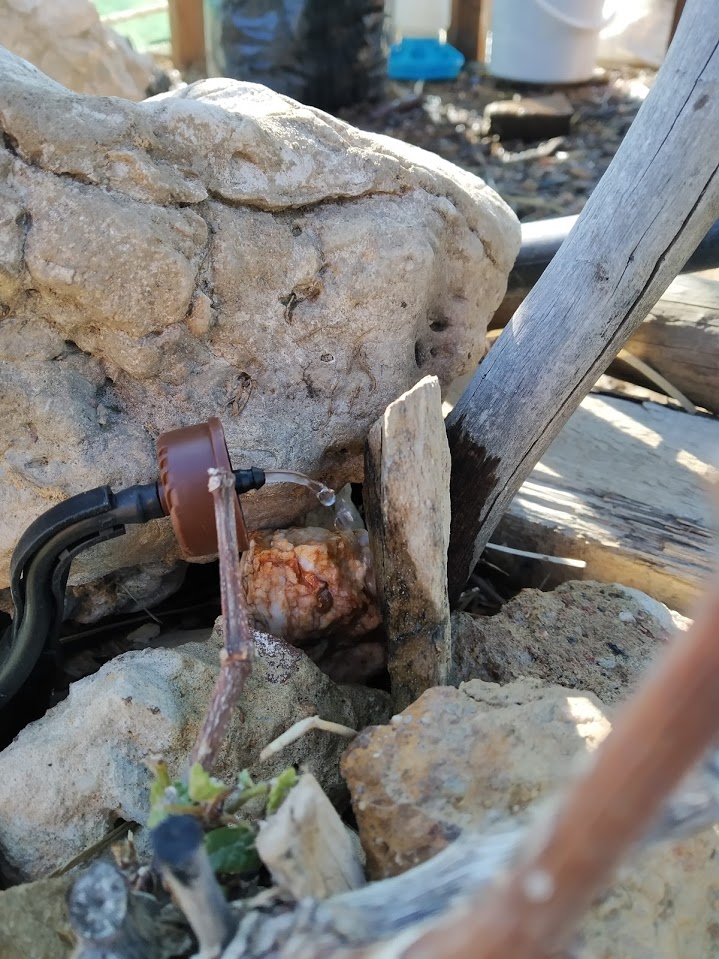
It’s been about a year now, and as seasons come and go, planning the permacultural layout of the property becomes a little easier. Over the last weekend or two, I created new water lines that feed specific areas by drippers or tiny low-waste micro-sprinklers. Leaving the impact sprinklers in place is a necessity, in case of fire or other larger scale germination tactics we might get up to. The dripper line will target each fruit tree and will deposit the water directly where required, wasting nothing. Trees, bushes, and even our grapes are now layered with woodchips, and then stone mulched. This makes any water deposits go down, stay moist and stay protected. Stone mulching is a multi-faceted strategy we learnt from our friend, Charl Viljoen of Capeland Permaculture. The large stones trap heat and moisture, protect the soil, and provide microbial and insect habitats and in our case keeps the chickens from spreading out mulch. Spiders living in the rock layer may catch bugs you do not want on the tree, and mice droppings will provide fertilisation for free. These drippers are ideal and work exactly the same on the high and low pressure lines. They can run for hours, delivering directly to the tree and making almost no impact on my tank levels. This is much more than I can say for the overhead sprinklers.

In the vegetable tunnels, we have two kinds of irrigation. Micro-sprayers and dripper tape lines. I am still undecided, and the trial will continue. Some will say that the micro-sprayers are wasteful, and they may be correct in certain scenarios. In windy conditions, we will lose water because of over-spray and evaporation. The sprayers are only turned on for about half an hour, every few days though. The thick mulch stored moisture for a long time, and I personally can not justify drippers on these wild growing garden tunnels. Apart from not seeing much wastage, I also find drippers impossible to check and control once you have dense vegetation growing all over them, which could lead to water deprivation in some areas. We noticed this in the baby-marrow tunnel, where a single dripper failed somewhere in the jungle of companions, causing dead-zones and inevitable death of the plant.
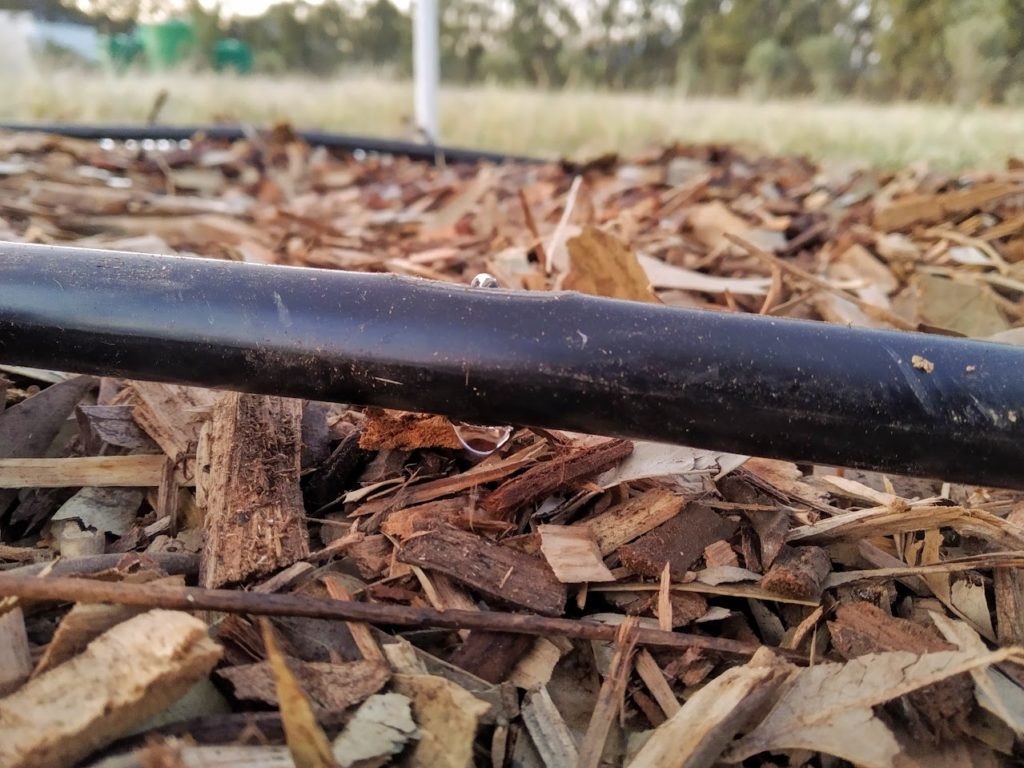
It’s worth mentioning that my curiosity and research on using dripper lines at various depths, different crops and alternative mulches prompted me to try it once again. In the newest shade net tunnel, I opted for woodchips as a mulch. The dripper pipe rests on the soil surface, and seeds are sown on both sides of it (a variety of vegetables including radish, kale, broccoli and herbs). A rough 25 mm of gum woodchips covers the seeded soil and drip-line. Germination has been fantastic, and it seems most of the seeds will push through. This form of irrigation seems utterly efficient, as it delivers water under the mulch layer. There is almost zero loss to evaporation and keeping water off the leaves can, in a lot of cases, prevent mildews and other problems.
I have to complete the article with a bit of honest confessions. In the northern half of the property, we plan to let our goats browse freely, while repairing soil and growing extra feed for them. It’s a delicate balance of numbers and timings. As with the rule of no-till, whereby it’s ok to till once in the beginning to kick-start life, we use sprinklers here. To get a start on nitrogen-fixing legumes and herbs to grow here, we had to till once and we will have to irrigate a bit to get the ball rolling. This weekend I also had another moment of clarity. Replacing the impact sprinkler with a gear-drive sprinkler reduces the water consumption(flow?) by half. It’s tendency to not propel streams out, and rather dissipate them over the 5 meter radius around it, works better. In less time, the gear-drive rained on the new ‘poly crop’ zones we planted with more water than the impact system. That is some food for thought, and mileage may vary depending on your needs, flow, and pressure.
Summarising this article can be done in a few bullet points:
- Think ahead of time when designing the water network.Consider flow rates, pipe diameters, and use cases.
- Stop valve everything so you can control flow and make repairs easy.
- Gear drive sprinklers seem to use less than impact sprinklers.
- Irrigate at-point where possible, with drippers instead of overhead sprinklers.
- Monitor your usage, water belongs to everyone else around you as well.
- Mulching makes a world of a difference, there’s no way to argue this, I reckon.
- Stone mulching seems to work well and eases the water-delivery placement.
- When planning irrigation, have multiple plans ready, and opt for the simplest solution:
- Simple means easy to implement, maintain, and better for the environment and your pocket.
- Throw rotten tomatoes at water-wasters and misusers.
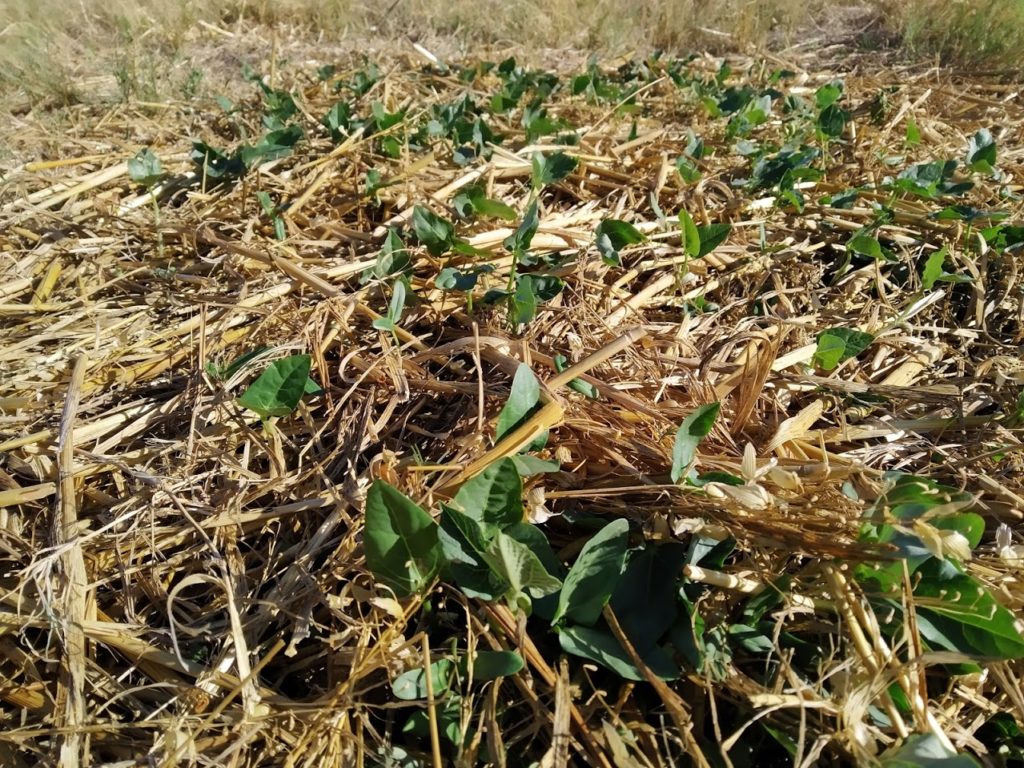
Thanks for reading. We put a lot of effort into this website to share what we learn. We experiment a lot and want you to do the same. Ask questions, give feedback, and consider becoming a Patreon supporter please!

